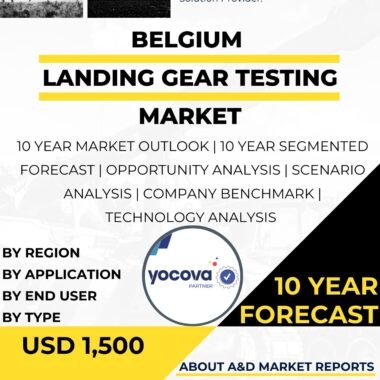Description
Malaysia Landing Gear market has experienced steady growth in recent years, driven by the nation’s efforts to strengthen both its aerospace and defense sectors. Landing gear is one of the most critical components of any aircraft, providing essential support during takeoff, landing, and ground operations. As Malaysia expands its aviation capabilities and modernizes its defense assets, the demand for advanced, reliable, and durable landing gear systems has increased significantly. This focus aligns with the country’s broader ambition to enhance national security, improve aviation safety, and position itself as a stronger player in the regional aerospace industry.
Malaysia Landing Gear market Drivers and Strategic Importance
Malaysia’s strategic location in Southeast Asia and its growing security requirements have pushed the government to modernize its military and civilian aircraft fleets. The integration of advanced landing gear systems ensures that military aircraft can operate efficiently from a wide range of airfields, including remote or improvised runways. This capability enhances operational readiness, allowing rapid deployment during emergencies and enabling flexible responses to regional security challenges.
In civilian aviation, landing gear plays an equally vital role. Passenger safety during takeoff and landing depends heavily on the reliability of these systems. Modern designs such as retractable landing gear also help reduce drag, improve fuel efficiency, and support smoother aircraft performance. As air travel demand in Malaysia continues to grow, airlines require landing gear technologies that deliver durability, performance, and long-term safety.
Malaysia Landing Gear market Technological Advancements
New generations of landing gear incorporate innovations such as lightweight composite materials, digital health-monitoring systems, and improved shock absorption. These advancements enhance fuel efficiency, reduce noise, and lower maintenance costs while offering greater resilience during repeated takeoff and landing cycles. In both civil and defense applications, efficient ground handling is essential, and landing gear supports safe taxiing, cargo loading, and passenger movement, all of which contribute to operational continuity at airports and airbases.
Malaysia Landing Gear market Collaboration and Local Development
Malaysia has placed strong emphasis on international collaboration to access advanced landing gear technologies. Partnerships with global aerospace manufacturers and technology providers have enabled Malaysia to acquire modern landing gear systems while gaining valuable exposure to global best practices. These collaborations support technology transfer, local industry development, and workforce skill enhancement.
Alongside international cooperation, Malaysia has intensified investment in domestic research and development. By fostering local innovation, the country aims to reduce dependence on foreign suppliers and build its own capabilities in landing gear design, materials engineering, manufacturing, and maintenance. Strengthening local R&D also supports Malaysia’s long-term goal of becoming a regional aerospace hub.
Malaysia Landing Gear Market Challenges
Despite strong growth, the market faces several challenges. Advanced landing gear systems are costly to develop, acquire, and certify, requiring extensive investment in engineering, testing, and safety validation. Budget constraints may affect the pace at which new systems are integrated into military and civil fleets.
Furthermore, landing gear must meet stringent aviation safety standards, as even minor malfunctions can pose serious risks. The certification process for landing gear components is rigorous and time-consuming, requiring continuous compliance with international aviation regulations.
Sustainability is emerging as another challenge. As the aviation industry moves toward greener solutions, landing gear manufacturers must incorporate lightweight materials and environmentally friendly designs that reduce emissions, extend component life, and support overall aircraft efficiency.
Malaysia Landing Gear Market Future Outlook
The future of the Malaysia Landing Gear market appears optimistic. Continued modernization of the defense sector, expansion of the civil aviation industry, and increased participation in global aerospace programs will drive sustained demand for advanced landing gear systems. Future developments will likely focus on improved safety features, reduced maintenance requirements, and greater integration with digital monitoring technologies.
Malaysia’s involvement in regional and international aviation partnerships will further influence landing gear requirements. Adopting globally compatible systems will ensure interoperability across allied military operations and compliance with international aviation standards. As technological expectations rise, Malaysia is expected to pursue next-generation landing gear solutions that emphasize durability, precision engineering, smart sensors, and environmental sustainability.
Malaysia Landing Gear Market Conclusion
In summary, the Malaysia Landing Gear market has made meaningful progress, supported by government modernization initiatives, international collaborations, and a growing domestic aerospace industry. Advanced landing gear systems have become essential to ensuring aviation safety, enhancing military mobility, and supporting the country’s broader aerospace ambitions.
However, the market must continue addressing challenges related to cost, certification, sustainability requirements, and technological development. By overcoming these hurdles, Malaysia can maintain a capable, modern, and resilient landing gear ecosystem that strengthens both its defense framework and civil aviation capacity.




